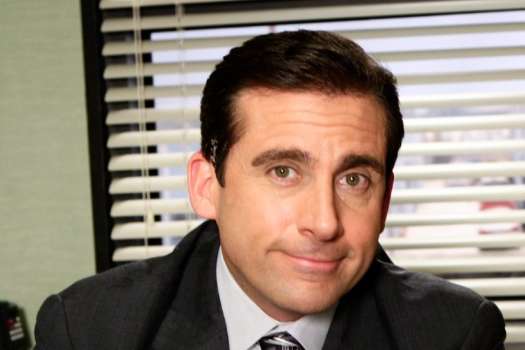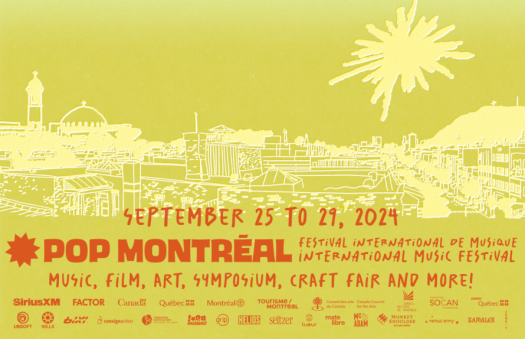Adrian Tomine Is Upfront About Shortcomings
Long car trips. Your first summer job. Helping a blind man with groceries. These moments, whether mundane or magical, all serve as inspiration for Adrian Tomine, whose sporadic ongoing comic, Optic Nerve, has been perplexing and entrancing people since 1995. Snapped up by Drawn & Quarterly when Tomine was only 20, hes only put out 11 issues in 12 years, but that hasnt dinged his popularity the only other "independent comic that outsells Optic Nerve is Dan Clowes Eightball.
Throughout the series run, you can see Tomines maturation and confidence in both his storytelling and drawing. While people were both infuriated and drawn to the comic due to Tomines abruptly ending, or Raymond Carver-esque vignettes, hes slowly expanded his stories. The culmination of this is Shortcomings, Tomines recently released hardcover graphic novel that puts together the storyline that stretched over the last three issues (#9 to #11) of Optic Nerve.
Focusing on the life of Japanese-American Ben Tanaka, Shortcomings is, in some ways, a simple story about Bens complicated relationship with his Japanese girlfriend, but it also sprawls out to include his bond with his lesbian Korean best friend, Alice, and the implications of Bens increasing interest in young white women combined with his general lack of knowledge or respect for Asian culture. In short, this dude is confused. But despite this being Tomines most dialogue-heavy story, the adventures of Ben Tanaka crackle with sarcastic wit, the right amount of drama and angst and Tomines cleanest lines yet.
For Tomine, the time was perfect for a quietly epic story. "It was a bit of a conscious decision on my part to challenge and push myself a little bit. I think I was just feeling a little bit of comfort with the short story form and also a little bit of envy in terms of what other cartoonists were achieving with these longer narratives.
One of the joys of Optic Nerve is how Tomine can make such simple moments seem amazingly profound. That single panel of bubbling soup prepared by your ex-girlfriend actually does seem like the best way to end a story. But, due to the stark and personal nature of the stories, one always wants to believe that Tomine is taking inspiration from his own life. While Tomine does sneak in some autobiographical moments into his stories, one is tempted to infer even more in Shortcomings as Tomine himself is Japanese-American, went to UC Berkeley, and, scarily, looks a lot like Ben Tanaka. "In terms of how much it is autobiographical, I would say very little, Tomine counters. "I think this is the most constructed and fictionalised story Ive ever written and I almost think, in some ways, because I felt like I was taking so many risks with making things up and writing purely fictional characters and themes and plots that I almost wanted to still maintain that level of intimacy and make it almost seem that it was autobiographical.
To make it even more confusing, this is the first time that hes tackled issues of race so overtly. "I think it was one of those areas of subject matter that a lot of people had almost been expecting me to deal with from the onset, he explains. "I feel like theres this almost offensive expectation in our culture that if you belong to any sort of minority group, your art must be always informed by that and you must create things as a means of expressing what it means to be part of that group. I think thats just a silly expectation to have of people and it took me by surprise when I was encountering that so early on in my career. Its a tough situation, but I wanted to figure out a way to eventually do that and still create something that I felt was in line with the work that I had done before.
In the end, Tomine has made incredible leaps from the angst-y college student who started 12 or so years ago. Indeed, the man of yore could never have written Shortcomings. As Tomine says, "I think that when I started out I was trying to use the comic to make people like me and I guess it was almost like this sort of bizarre flirtatiousness where I wanted people to see this work and not for them to think Oh, that was an interesting story but Hmm, the guy who drew this must be a cool guy and Id like to meet him. It was very pathetic in retrospect but now Im older and Im about to get married and I have more friends than I have time for. Its been a real relief to have that change in terms of how I approach the work.
Throughout the series run, you can see Tomines maturation and confidence in both his storytelling and drawing. While people were both infuriated and drawn to the comic due to Tomines abruptly ending, or Raymond Carver-esque vignettes, hes slowly expanded his stories. The culmination of this is Shortcomings, Tomines recently released hardcover graphic novel that puts together the storyline that stretched over the last three issues (#9 to #11) of Optic Nerve.
Focusing on the life of Japanese-American Ben Tanaka, Shortcomings is, in some ways, a simple story about Bens complicated relationship with his Japanese girlfriend, but it also sprawls out to include his bond with his lesbian Korean best friend, Alice, and the implications of Bens increasing interest in young white women combined with his general lack of knowledge or respect for Asian culture. In short, this dude is confused. But despite this being Tomines most dialogue-heavy story, the adventures of Ben Tanaka crackle with sarcastic wit, the right amount of drama and angst and Tomines cleanest lines yet.
For Tomine, the time was perfect for a quietly epic story. "It was a bit of a conscious decision on my part to challenge and push myself a little bit. I think I was just feeling a little bit of comfort with the short story form and also a little bit of envy in terms of what other cartoonists were achieving with these longer narratives.
One of the joys of Optic Nerve is how Tomine can make such simple moments seem amazingly profound. That single panel of bubbling soup prepared by your ex-girlfriend actually does seem like the best way to end a story. But, due to the stark and personal nature of the stories, one always wants to believe that Tomine is taking inspiration from his own life. While Tomine does sneak in some autobiographical moments into his stories, one is tempted to infer even more in Shortcomings as Tomine himself is Japanese-American, went to UC Berkeley, and, scarily, looks a lot like Ben Tanaka. "In terms of how much it is autobiographical, I would say very little, Tomine counters. "I think this is the most constructed and fictionalised story Ive ever written and I almost think, in some ways, because I felt like I was taking so many risks with making things up and writing purely fictional characters and themes and plots that I almost wanted to still maintain that level of intimacy and make it almost seem that it was autobiographical.
To make it even more confusing, this is the first time that hes tackled issues of race so overtly. "I think it was one of those areas of subject matter that a lot of people had almost been expecting me to deal with from the onset, he explains. "I feel like theres this almost offensive expectation in our culture that if you belong to any sort of minority group, your art must be always informed by that and you must create things as a means of expressing what it means to be part of that group. I think thats just a silly expectation to have of people and it took me by surprise when I was encountering that so early on in my career. Its a tough situation, but I wanted to figure out a way to eventually do that and still create something that I felt was in line with the work that I had done before.
In the end, Tomine has made incredible leaps from the angst-y college student who started 12 or so years ago. Indeed, the man of yore could never have written Shortcomings. As Tomine says, "I think that when I started out I was trying to use the comic to make people like me and I guess it was almost like this sort of bizarre flirtatiousness where I wanted people to see this work and not for them to think Oh, that was an interesting story but Hmm, the guy who drew this must be a cool guy and Id like to meet him. It was very pathetic in retrospect but now Im older and Im about to get married and I have more friends than I have time for. Its been a real relief to have that change in terms of how I approach the work.




